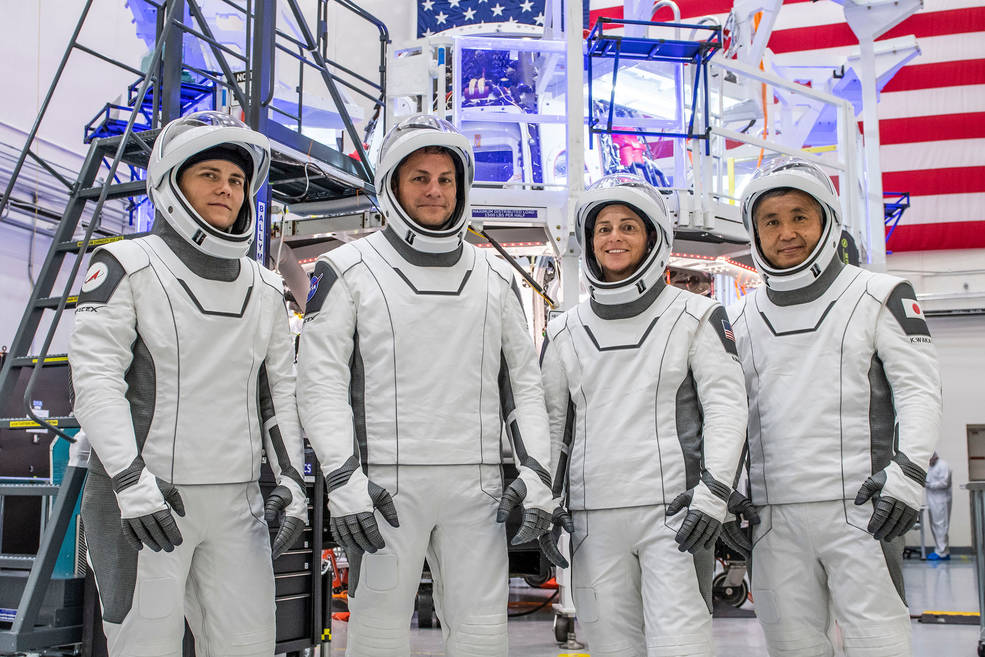
The four members of NASA’s SpaceX Crew-5 mission came back to Earth last weekend after five months in the International Space Station (ISS). The purpose for Crew-5 was to ‘perform scientific investigations and technology demonstrations.’ They were in Space for over 157 days and returned in the Dragon Endurance spacecraft on Saturday, at 9:02 pm, in the Gulf of Mexico.
While in Space, Crew-5 contributed to over a hundred experiments and demonstrations. Some of the work they did includes growing protein crystals for medical research, and collecting cosmic rays from the Universe using the Alpha Magnetic Spectrometer to understand dark matter and dark energy.
Crew-5 astronaut, Josh Cassada, explained one experiment they started that involves growing dwarf tomatoes in the International Space Station. “We’re trying all kinds of varieties of light in terms of color, in terms of duration, so that eventually we can start growing our own fruits and vegetables up here, and then we’re really going to need that for deep space.”

The crew were given many assignments like this one with the hope of finding ways to enhance future long term space missions. Much of the work done on the international space station is to push further and further into space. Another Crew-5 member, Koichi Wakata, has expressed these sentiments, “The station is a wonderful testbed for future exploration and I’m so excited to be part of this experiment that will benefit us for exploration of the Moon and Mars.”
Crew-5 and other Commercial Crew Programs also have an importance to science on Earth. Nicole Mann is the first female commander of a NASA Commercial Crew Program after being assigned to SpaceX Crew-5. She is also the first Native American woman in space. Mann explains,“A lot of what we do on the International Space Station benefits humans back on Earth and focuses on our planet and how important it is that we gather this information and this data to understand how we are affecting the planet and how to take care of it.”

As Mann stated, some of the significant research done by Crew-5 actually involves humans on Earth, this includes their health. In one experiment the crew used nematodes to examine the effects of microgravity on the nervous system as it is believed this could lead to better health for the aging population.
They also reinstalled the BioFabrication Facility (BFF) after it had been updated. The BFF is a part of a long term plan to manufacture whole human organs in space since Earth’s gravity inhibits printing of smaller, complex structures within organs. Before it was reinstalled, the BFF was already printing human heart cells and a part of the knee.
Although Crew-5 have returned home their mission is not over and NASA’s Commercial Crew Programs are ongoing. The Commercial Crew Programs’ SpaceX, Crew-6, already landed on the International Space Station on March 3rd- over a week before Crew-5 left. They will take over any ongoing tasks.
Crew-6 will also conduct new research, although much of it will still be ‘to prepare for human exploration beyond low-Earth orbit, and benefit life on Earth.’ There will be more than 200 experiments and technology demonstrations over their mission. Some examples include ‘studies of how particular materials burn in microgravity, tissue chip research on heart, brain, and cartilage functions, and an investigation that will collect microbial samples from the outside of the space station.’
The missions conducted by Commercial Crew Programs utilizes the privilege of having the International Space Station, which has been in operation for 22 years. The missions help NASA test technology, practice science, and develop skills that will benefit life on Earth and will be needed for low-Earth orbit and long duration expeditions, including future trips to the Moon.
